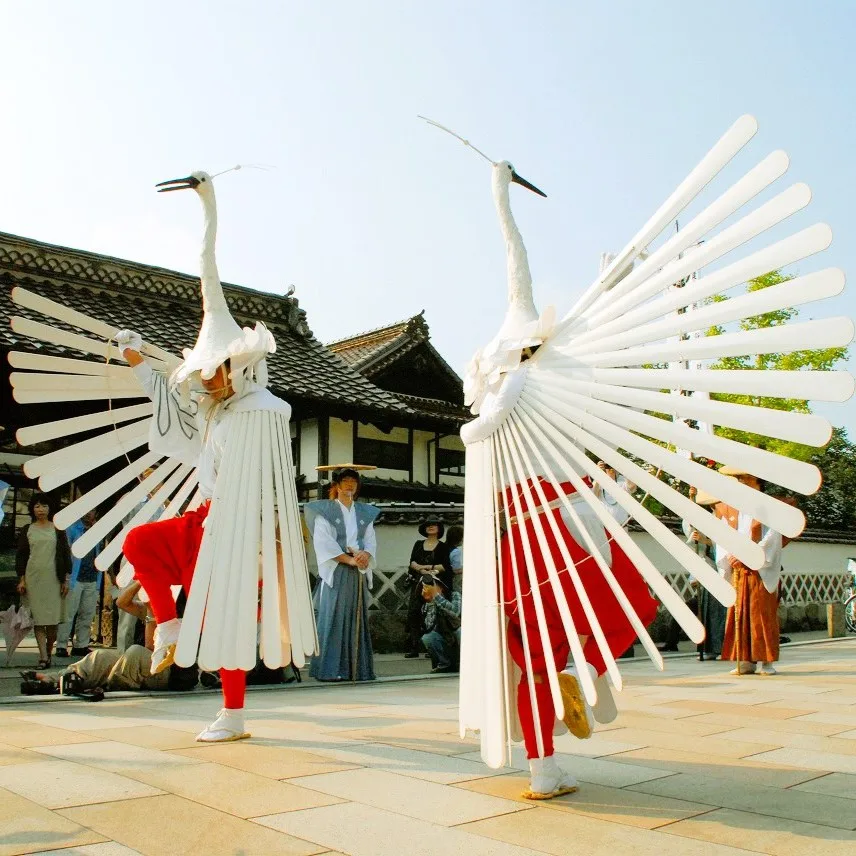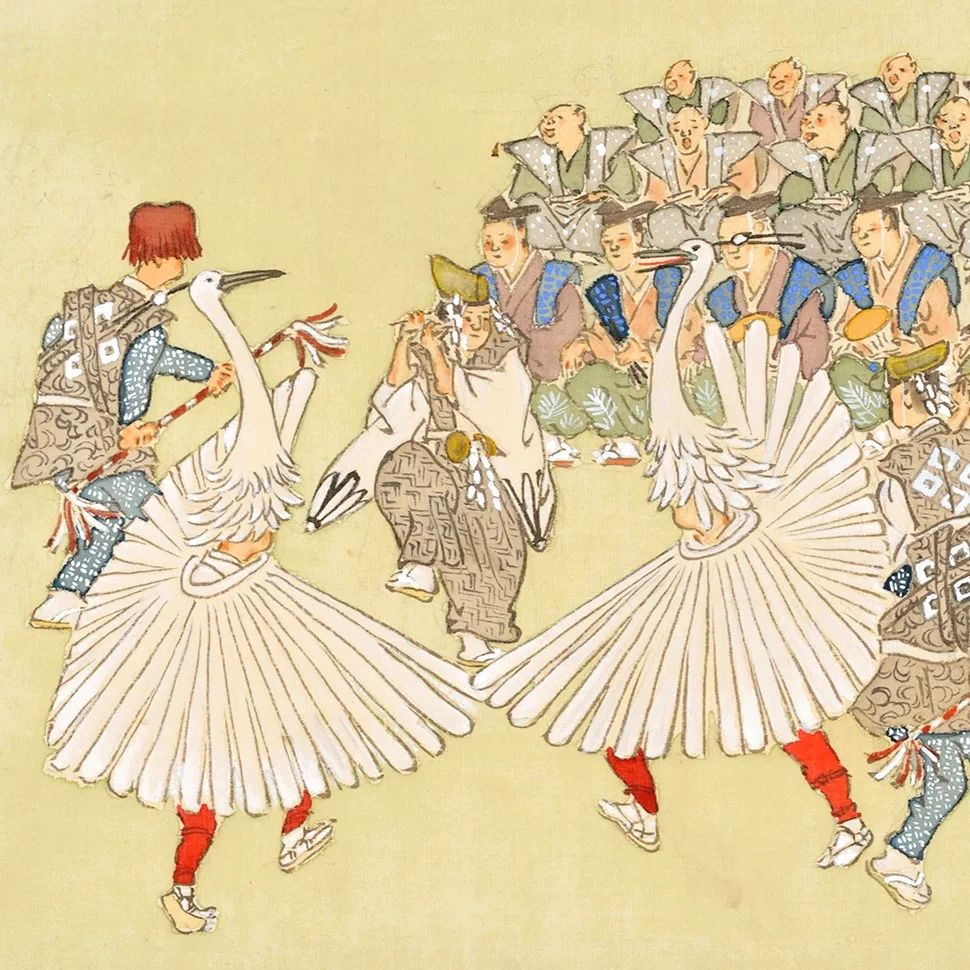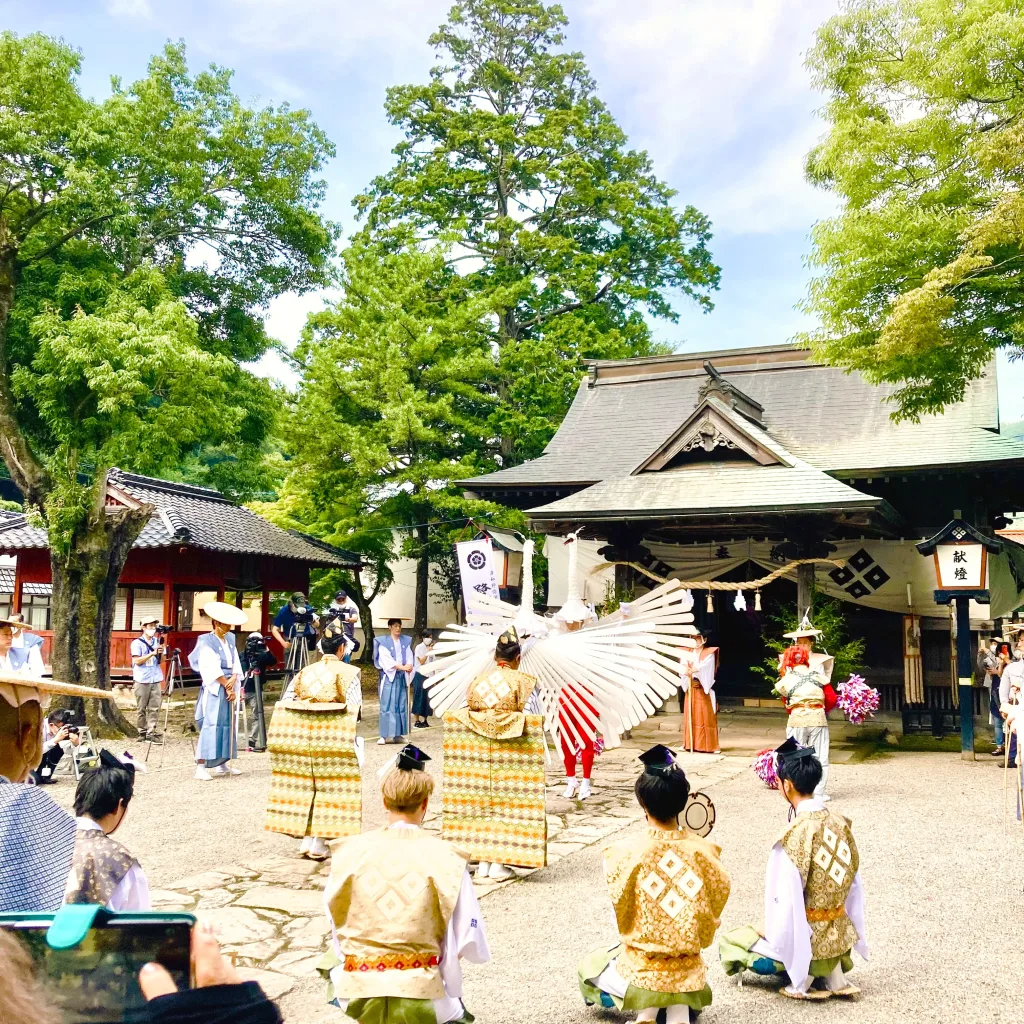投稿日:2024年07月17日
A sacred dance infused with prayers of protection against diseases and evil spirits.


Solemn chants, flutes, bells and drums accompany a male and female heron as they dance beneath the summer sky.
In 2022, the Sagimai was registered on the list of UNESCO Intangible Cultural Heritage of Humanity as one of the 41 “Furyu-odori” (Ritual Dances) and is a cherished summer tradition in Tsuwano. This elegant dance and sacred offering is held every year during the Grand Festival of the Yasaka Jinja Shrine on both July 20th and 27th, and preserves the ancient traditions of the Kyoto Gion Matsuri.
Sagimai is said to have started in 1542, when it was introduced to Tsuwano from Kyoto via Yamaguchi.
The origin of this dance dates back to the 8th-century Nara period, when Tanabata, also known as the Star Festival, was introduced from China. This festival celebrates the mythological love story of Orihime and Hikoboshi, represented by the stars Vega and Altair respectively, who are lovers separated by the Milky Way and allowed to meet only once a year on July 7th.
In this enchanting tale, the kasasagi birds come to the rescue, creating a bridge with their wings across the Milky Way to enable the lovers to reunite.
This Chinese legend was seamlessly woven into court ceremonies and festivities. Interestingly, although the word kasa-sagi includes sagi (heron), it actually refers to a magpie, a bird not native to Japan at the time. To bridge the gap, a kasa (“hat” in Japanese) was added to the head of the sagi (heron), leading to a delightful play of words (kasasagi = heron with a hat).
Over time, as Tsuwano’s heron dance evolved, it lost the kasa (hat) and preserved only the name sagi (heron) and the imagery of crossing a bridge in the song’s lyrics. This preservation keeps the spirit of the Tanabata legend alive, even as the dance’s appearance transformed.

Held in the heart of Tsuwano, locals dressed in traditional attire—complete with intricately designed heron costumes—take to the streets.
The dance is accompanied by singers, and musicians playing traditional instruments, creating an atmosphere of enchantment that captivates both residents and visitors alike.
The Sagimai festival starts in the morning on the 20th at Yasaka Jinja.
On both days, the parade starts at Tonomachi Street from 3:00 PM and lasts typically 2-3 hours.
To make the most of your visit, plan ahead by checking accommodation options, the precise festival schedules, and any special events, like Iwami Kagura performances, that might be taking place.
Sagimai has been designated as an Important Intangible Folk Cultural Property of Japan and is recognized internationally as one of Japan’s representative classical performing arts.
For more information, please contact
the Tsuwano Tourism Association at tsuwanok@tsuwano-kanko.net